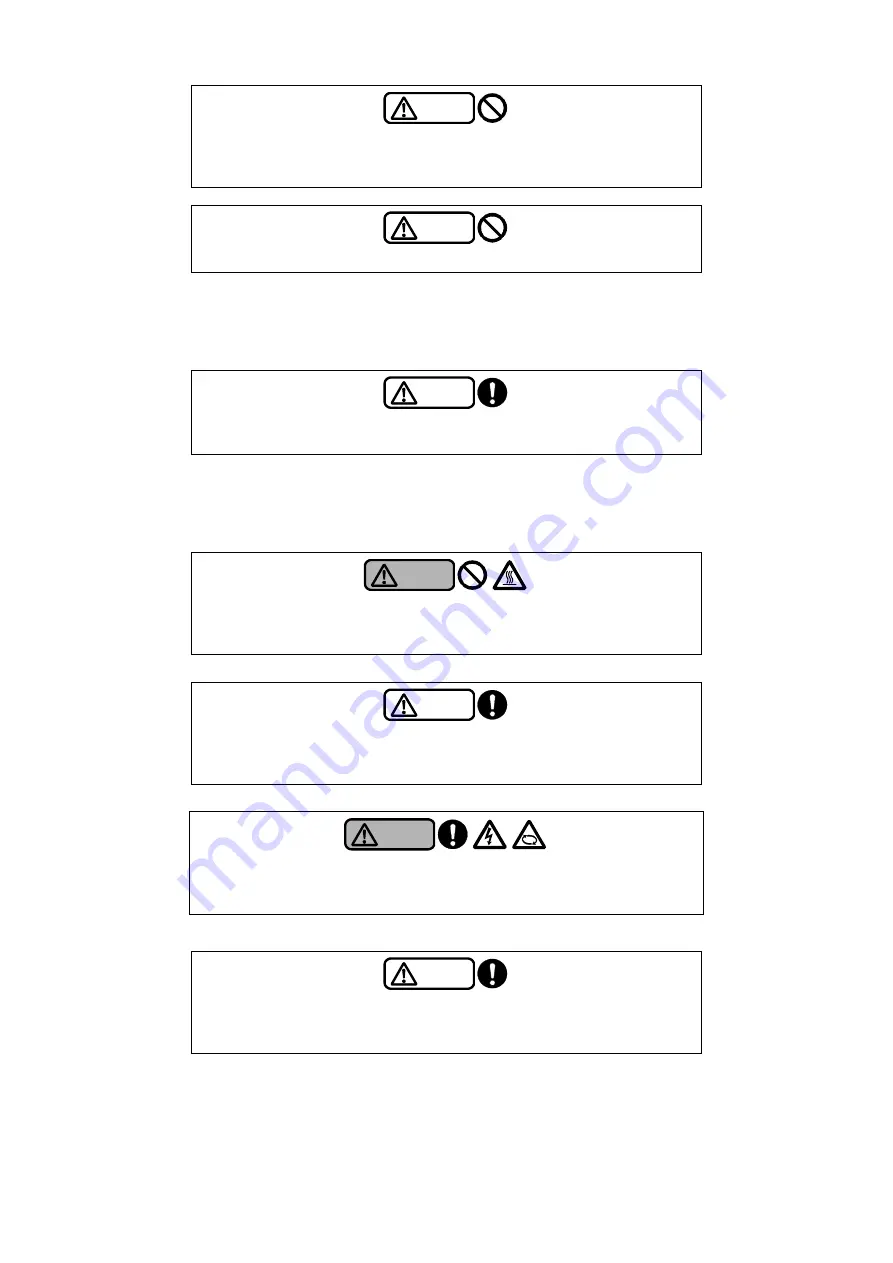
4-3
Caution
Never check the rotation direction by running the pump dry. Running the
pump dry even for a short time may cause damage to the sliding parts (e.g.
bearings, mechanical seal) inside the pump, leakage or unusual noise.
Caution
Do not run the motor in reverse because it may cause a failure.
(2) Turn on the power to start the pump.
(3) Open the air release valve and start self-priming operation. When opening the air release valve,
the air inside the suction pipes will be expelled. When all the air has been expelled, the pump
starts pumping water operation. As soon as water starts flowing, fully close the valve.
Caution
If the pump does not start pumping water for a long period of time, the
pump may be faulty. Inspect the pump and piping.
(4) During the initial period of pump operation and circulation, gradually open the sluice valve on the
discharge side to circulate liquid at a flow rate (flow velocity) higher than the normal operation.
After this circulation cleaning is complete, clean the strainer.
(5) Adjust the sluice valve on the discharge side so that the specified pressure is achieved.
Warning
Do not perform long hours of no-discharge operation continuously.
Failure to observe this may increase the temperature in the pump, resulting
in an unexpected failure.
(6) As a guide, limit the frequency of the startups and shutdowns to about five times an hour.
Caution
Minimize the frequency of startups and shutdowns of the pump because
frequent startups and shutdowns may damage the pump sooner than
usual. Do not start the pump more than five times an hour or so.
(7) In the event of a power failure during operation, be sure to turn off the power.
Warning
In the event of a power failure, be sure to turn off the main power. The
pump may suddenly start up on restoration of the power, thus leading to an
injury.
(8) Before restarting the pump, confirm that the pump has completely stopped.
Caution
Before restarting the pump, be sure to check that the pump has completely
stopped. Turning on the power while the pump is still rotating causes an
excessive torque on the pump and may cause a failure.
(9) Check for any abnormal pressure, electric current, vibration, noise, and other conditions. If an
abnormality is found, take necessary measures with referring to “6. Troubleshooting.” Refer to
the following chart for the “vibration vs. rotation speed.” (If you install the pump on a vibration
isolator, the standard vibration values are different from those in the following chart. Contact us in
such a case.)










































